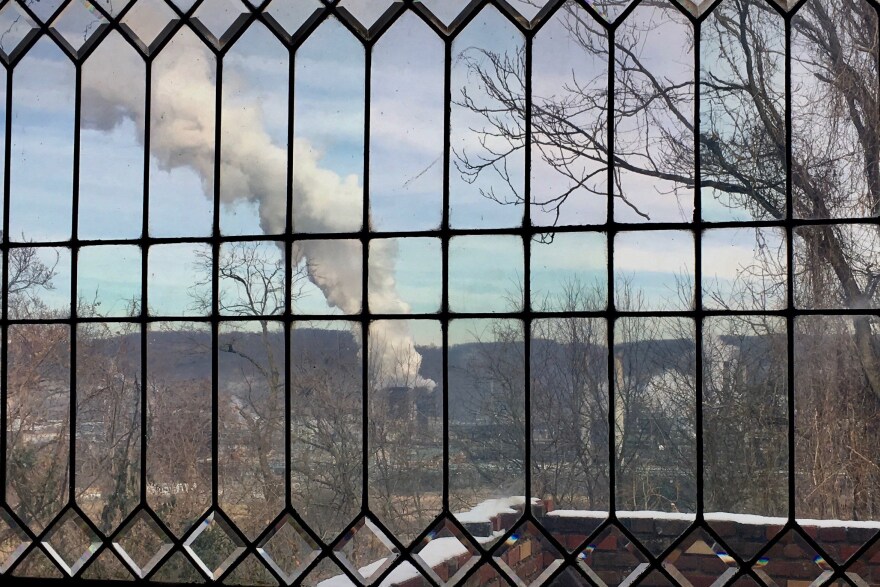The U.S. Environmental Protection Agency has announced plans to lower its threshold for acceptable levels of fine particulate matter in the air. To some clean air advocates in Pittsburgh, however, the new measure is not strong enough.
The EPA plans to limit the presence of PM2.5, a form of particulate matter small enough to penetrate deep into the lungs. Sometimes described as soot, it is often spewed from power plants, industrial smokestacks and vehicle tailpipes. According to the EPA’s announcement Friday, its presence has been linked to everything from asthma and cancer to cardiovascular problems and premature death.
With increasing scientific evidence on the dangers of PM2.5, the EPA has proposed reducing the national ambient air quality standard from the current 12 micrograms per cubic meter allowance to 9 or 10 micrograms per cubic meter a year.
“This is a long overdue progress that has been a long time in the works,” said Zachary Barber, Clean Air Advocate for the statewide policy group Penn Environment.
The EPA last changed its annual PM2.5 air quality standards in 2012. Barber explained that while the EPA typically reconsiders its air quality standards every five years, the Trump administration declined to change the current standards in December 2021, despite recommendations from the agency’s Clean Air Scientific Advisory Committee.
Over the last several years, Allegheny County has reported air quality measurements within the federal standard. From 2019 to 2021, none of the county’s eight air monitoring sites reported annual measurements above the 12 micrograms per cubic meter threshold.
Looks like pollution in Allegheny County went back up toward pre-pandemic levels in 2021...😐https://t.co/NtMH5StjMz pic.twitter.com/TwG49aORtn
— Reid Frazier (@reidfrazier) October 17, 2022
But they don’t dip far below the EPA’s threshold, either. The Mon Valley’s Liberty monitor, for instance, saw an average of 11.2 micrograms per cubic meter for that three-year period, falling above what the EPA's new proposal would allow if adopted.
Barber said tighter air quality standards would force regulators, such as Pennsylvania’s Department of Environmental Protection and the Allegheny County Health Department, to come up with more ambitious plans to curb carbon emissions.
In prior reports, most members of the EPA's Clean Air Scientific Advisory Committee recommended the annual threshold start as low as eight micrograms per cubic meter. According to a study commissioned by the Environmental Defense Fund, doing so would prevent four times as many premature deaths related to fine particle air pollution than a standard of 10.
“Anything that the Biden administration can do to lower these standards and set the strongest possible protection will mean healthier lives and more lives saved,” Barber said.
Barber and others are encouraging Pennsylvanians to weigh in on the matter. The public comment period on the EPA’s rule will last 60 days.
“We need everyone in our region which continues to experience poor air quality, especially people in the Mon Valley environmental justice region, to participate in the upcoming EPA hearings so that their voices can be heard about ongoing, terrible air pollution problems that exist in our area,” Matthew Mehalik, executive director of the Pittsburgh-based Breathe Project.
Mehalik also urged the EPA to improve its daily standard to 25 micrograms per cubic meter “to stop the horrible, overnight pollution episodes that plague our region.”
The agency said it is proposing to keep its 24-hour air quality standard for PM2.5 at 35 micrograms per cubic meter, though it will also accept comments on reducing it.





